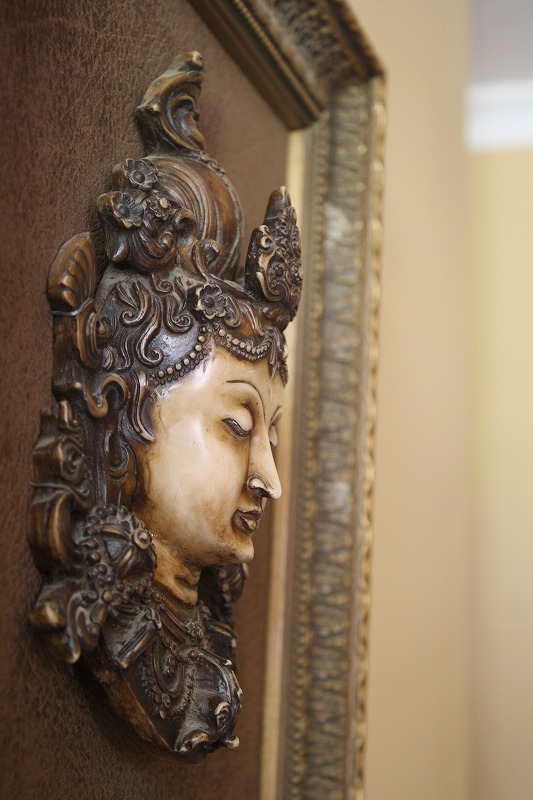figurative language narrative of the life of frederick douglassudell funeral home obituaries
figurative language narrative of the life of frederick douglass
In the passage about his escape and arrival in New York, Douglass emotions regress from feelings of joy to feelings of emptiness. How does this excerpt from Narrative of the Life of Frederick Douglass demonstrate elements of Realism? Douglass firmly believed that slavery was not only bad for slaves, but it was bad for slaveholders as well. 5 10). InNarrative of the Life of Frederick Douglass, An American Slave, Douglass uses much figurative language as part of his rhetorical strategy to deliver his message to the reader. He finds a way to reflect on the events taking place without getting too emotional, which somehow makes a greater effect on the readers and reveals his strong feelings on the subject without overwhelming the writer. In this passage, which appears in Chapter and Douglass explains how this destroys the childs support network Members will be prompted to log in or create an account to redeem their group membership. 2016 CT.gov | Connecticut's Official State Website, regular He allows the reader to spend a day in the life of a slave to see the effects from it. He would whip to make her scream, and whip to make her hush; and not until overcome by fatigue, would he cease to swing the blood-clotted cowskin. When Douglass writes that he is "fast in (his) chains" and "confined in bands of iron," he means this both literally and figuratively. Connecticut teachers should be cautioned that the activities as described would be difficult to complete in the time prescribed and still achieve the rigor intended. Douglass appeals to the mournful emotions of the audience by expressing how the overseers gave no mercy or cared about the effect of whippings to the slaves. Narrative of the Life of Frederick Douglass - full text.pdf - Google Docs Title: Narrative of the Life of Frederick Douglass An American Slave Author: Frederick Douglass Release Date: January 1992 [eBook #23] [Most recently updated: February 28, 2021] Language: English Character set encoding: UTF-8 Produced by: An Anonymous Volunteer and David Widger It was a most terrible spectacle. The word rapture eloquently expresses his feelings of joy and peace as he meets Mrs. Auld. Obviously, it was not the slaves fault, but the horses. From that time until now, I have been engaged in pleading the cause of my brethren - with what success, and with what devotion, I leave those acquainted with my labors to decide.". Douglass directs towards white men, let him place himself in my situation, he elaborates through parallelism by trying to make his audience imagine being without home or friends-without money or credit and wanting shelter, and no one to give it-wanting bread and no money to buy it. be a signal of the larger moral illnesses of the culture. At the time, no one knew better when it came to slavery. While some think that slaves sing out of contentment, Douglass writes that slaves sing out of sorrow. This quote was created to show the effect that slavery had on not only the slave, but the slaveholder. 8U/QCAh,/J~G99y8 tWo.tA That cheerful eye, under the influence of slavery, soon became red with rage; that. This question is answered in full in Gradesaver's analysis of Chapter Nine, which is readily available in its study guide for the unit. A "brute" connotes a savage, wild animal, and this imagery again emphasizes the idea that slavery, in quenching the fire of the human spirit, reduces the human to an animal. Douglass uses irony here to show that Lloyd treats his animals better than he treats the human slaves. Through this Frederick Douglass appeals to the minds of the sympathetic. It makes us dive into the time of slavery, suffer together with the slaves, and feel physically and emotionally the injustice of the system of the slavery. owners distort social bonds and the natural processes of life in What evidence does he use to support his claim? To some readers in Douglass's time it may have seemed natural for blacks to be kept as slaves. endobj Douglass was born into slavery because of his mothers status as a slave. From the outset of the book, Douglass makes it clear that slaves are deprived of characteristics that humanize them, like birthdays. In Narrative of the Life of Frederick Douglass, Frederick Douglass uses contrast, parallelism, imagery, allusions, and details to enhance the wickedness of slavery. <> The Question and Answer section for Narrative of the Life of Frederick Douglass is a great It also evinced a very educated and highbrow rhetorical style that seemingly left the slave dialect behind. He compares the mournful singing of a slaves to the way a castaway on a deserted island might sing to content himself in the following excerpt: The singing of a man cast away upon a desolate island might be as appropriately considered as evidence of contentment and happiness, as the singing of a slave; the songs of the one and of the other are prompted by the same emotion. The 100 best nonfiction books: No 68 - Narrative of the Life of 1 I did not, when a slave, understand the deep meaning of those rude and apparently incoherent songs. "You are loosed from your moorings, and are free; I am fast in my chains, and am a slave! People long for freedom and cry out for it in their souls; the songs he can still hear tell of this desperation. By clearly connecting with his audiences emotions, Douglass uses numerous rhetorical devices, including anecdotes and irony, to argue the depravity of slavery. He explains the means by which slave And slavery is when families who had colored skin were separated and sold of to a person that can do anything to them, the slave is pretty much like the slaveholders property. <>>> It provides unsurmountable proof that like any man, a slave deserved a life of dignity and liberty. In the excerpt, Frederick Douglass recounts his transition from feelings of excitement to feelings of fear and loneliness during his escape and his arrival in New York using figurative language, diction, and repetition. The narrative of the life written by Frederick Douglass is considered to be one of the most powerful books created by abolitionists. As an adult he writes that he realizes that this was one of the first times he really became aware that he was enslaved and what the horrors of that position entailed. You can find out the quirk of you to create proper statement of reading style. Slavery doesn't literally have a hand, but personifying it. . Later Douglass talks about the songs that he used to hear when he was confined in slavery, songs that "told a tale of woe beyond [his] comprehension." Simply stated, Douglass was attempting to expose the horror of slavery to a large reading public. His Narrative of the Life of Frederick Douglass, An American Slave, (Document G) makes emotional reading (lurid descriptions like "bitterest dregs of slavery" or "broken in body, mind, and soul" elicited reactions of disgust and dejection, which is the what abolitionists were hoping for) and showed that ultimately a slave, long thought to be a possession and less than human, was very much a person with reason and intellect. McKeever, Christine ed. Who is Frederick Douglass' intended audience in his autobiography, the Narrative of the Life of Frederick Douglass? Figurative Language Major Events Cheerful Eye - Personification pg. How is Douglass able to maintain his religious faith when the faith of his owners is used to justify their treatment of him? While the white man can arrive to New York having access to money or shelter, the slave. This simile suggests the therapeutic power of the world Douglass imagines within himself. His audience was a seemingly sympathetic one and got to them through rhetorical questions. RL.8.4 Determine the meaning of words and phrases as they are used in a text, including figurative and connotative meanings; analyze the impact of specific word choices on meaning and tone, including analogies or allusions to other texts. How many masters did Frederick Douglass have? The third paragraph is distinguished immensely from the others by the elements and details in it. He uses his personal life story to argue against common myths that were used to justify the act of slavery. In the story, Douglass brings us back in time to show his experiences of the hypocrisy of human nature. like soothing and tender to re-create imaginatively the childhood he He sees his own aunt being beaten mercilessly and wonders if he will be next. Douglass was never able to answer the question of how he felt about New York. Narrative of Frederick Douglass Reading Questions.pdf The Narrative of the Life of Frederick Douglass, written by Frederick Douglass himself, is a brutally honest portrayal of slaverys dehumanizing capabilities. Prior to the eradication of slavery writers like Frederick Douglass sought to free millions of slaves in America. Chapter VII - CliffsNotes The Narrative of the Life of Frederick Douglass: Excerpt - CommonLit Frederick Douglass, Narrative of the Life of Frederick Douglass, an American Slave, Written by Himself, 1845. However, there is somewhat of a larger point here: Douglass was using a style of speaking and writing that white America had long denied him or thought him even intellectually capable of possessing. Preface and Letter from Wendell Phillips, Esq. I wish I could describe the rapture that flashed through my soul as I beheld it. Douglass tries to express this by the use of parallelism. He saw the injustice and the cruelty and was forever scarred. He uses personification in this statement: Douglass says that as he still hears the echoes of these songs being sung, it forever deepens his hatred of slavery and all it represents. Understanding the value of education, he continued to teach himself. During the early-to-mid 1800s, the period that this book was written, African-American slaves were no more than workers for their masters. He feels as if, "You are freedom's swift-winged angels, that fly round the world" to compare the free as easy-going angels that can go as they please. And in this essay I will talk about how Douglasss position differs from those who supported slavery and also I will be talking about How Douglass used his Narrative to share his position. His story contains elements of the unimaginable realities of slavery, in pursuance of reaching out to an audience to spread awareness. A famous slave and abolitionist in the struggle for liberty on behalf of American slaves, Frederick Douglass, in his autobiography published in 1845, portrayed the horrors of captivity in the South. Contact us He felt an abiding nationalism or pride in his people, often referring to them as his "fellow countrymen," alluding to their placement outside of the country that had enslaved them. Summary Analysis Douglass was born in Tuckahoe, Maryland. 5 0 obj Literary And Stylistic Devices In Narrative Of The Life Of Frederick Covey's course toward me form an epoch in my humble history. In Narrative of the Life of Frederick Douglass: An American Slave Douglass recounts his experiences and tribulations as a slave. Angels are also thought of as protective and as of agents of God, so using this simile helps the reader to understand how much protection Douglass needed. Not affiliated with Harvard College. I have frequently found myself in tears while hearing themTo those songs I trace my first glimmering conception of the dehumanizing character of slavery. (105). Throughout this autobiography, Frederick Douglass uses language to portray the similarities and differences between the two sides. would have known if his mother had been present. He goes one step further and uses the metaphor to convey that he walked through the gates of hell itself when he first witnessed a beating. However, as time passed, the ill effects of the system of slavery began to blight her previously-virtuous personality. "I remember the first time I ever witnessed this horrible exhibition. He is trying to represent his helplessness by having a white man imagine being in his shoes. A short, yet powerful part of his story describes his adventure escaping, He confesses that from the start of his slavery his mindset was to Trust no man! and that he saw in every white man an enemy, indicating his distrust and fear to reach for help in order to settle his life in New York. Summary The Preface to the Narrative was written by William Lloyd Garrison, the famous abolitionist, on May 1st, 1845 in Boston, Massachusetts. PDF Narrative of the Life of Frederick Douglass - Grammardog You are freedom's swift-winged angels, that fly round the world; I am confined in bands of iron! eNotes Editorial, 28 June 2019, https://www.enotes.com/homework-help/frederick-douglass-use-figurative-language-525687. 2023. Who are the experts?Our certified Educators are real professors, teachers, and scholars who use their academic expertise to tackle your toughest questions. Narrative of the Life of Frederick Douglass, Preface by William Lloyd Garrison & Letter from Wendell Phillips, Preface by William Lloyd Garrison & Letter from Wendell Phillips, Frederick Douglass and Narrative of the Life of Frederick Douglass Background. What does Frederick Douglass mean when he says "Bread of Knowledge". 'uSmYy%Ov'd,bm"9mOrrF)DsP9f>ybiLa#1@: .aG L&L0Bp2F>'"%R=7N (4g(R xF) "2=IttV "YRi3\x}9"MW[B_uPf How does the author use figurative language in The Narrative of the I can never get rid of that conception. Narrative of the Life of Frederick Douglass - GradeSaver Slavery consists of physical as well as mental bondage, and Douglass sloughs off the physical bondage of Covey. Best summary PDF, themes, and quotes. Youve successfully purchased a group discount. Through his physical refusal to be dominated, Douglass achieves a new definition of self and a new consciousness and resolve. Covey was thus quite successful as a breaker of slaves, at least until Douglass finally fought back. Narrative of the Life of Frederick Douglass, An American Slave: Written by Himself essays are academic essays for citation. Douglass's aunt was not the only slave who was beaten, and Douglass was not the only child who grew up without a mother. Timeline of the Life of Frederick Douglass c.1818-1840 Midway through hisNarrative,Douglass makes an apostrophe to the ships on the Chesapeake Bay. In life, humans have many different traits that describes themself. Narrative of the Life of Frederick Douglass tells the remarkable story of Frederick Douglass as he witnesses the dehumanizing effects of slavery on both slaves and their masters and works to be acknowledged as a human being. He became the first Black U.S . yU6M9}}rKl[s=]Csn6t%kfagV* {D P5ZrSP.LbJ=6(*a]{' This gives the impression that Douglass has the strength of a whole world to draw upon in his fight against slavery, and the metaphor of a different world within him points to how much strength he had, and needed. Save over 50% with a SparkNotes PLUS Annual Plan! Frederick Douglass's narrative consists of figurative language. Narrative of the Life of Frederick Douglass, an American Slave Chapter 7 Lyrics I lived in Master Hugh's family about seven years. This simple quote exemplifies his dedication to improving the minds and invigorating the hearts of his brethren-in-chains. He was a cruel man, hardened by a long life of slave- holding. However, slaveowners were also affected by the "peculiar institution". Use of Ethos, Pathos, and Logos in Frederick Douglass' Life of a Slave Slave religion was a fusion of traditional African beliefs and Christianity, oftentimes with a focus on the latter's stories of the Children of Israel and their flight from Egypt. Douglas wants the reader to wince at this imagery. You move merrily before the gentle gale, and I sadly before the bloody whip! He was an escaped slave who used that in his speeches as a topic to gain the attention of his audience. It was the blood-stained gate, the entrance to the hell of slavery, through which I was about to pass. I was quite a child, but I well remember it. In the narrative Douglass effectively uses rhetorical imagery, antithesis, and irony in order to expose the harsh reality of slavery during the 19th century. Douglass's refusal to allow Covey to brutally beat him anymore constitutes the climax of the autobiography. It could be because it is not supported, or that JavaScript is intentionally disabled. Too young to work in the plantation, he run errands and kept the yard clean. Fredrick Douglass depicts his own style of writing in his memoir, Narrative of the Life of Frederick Douglass. In this quotation, Douglass uses descriptive adjectives This is demonstrated in the third paragraph, which makes it stand out. Essay Douglass uses figurative language, diction, and repetition to emphasize the conflict between his emotions. Like the Jews, the slaves felt like their persecution would eventually end in an afterlife where they would encounter their friends and families and finally be free of the brutality, oppression, and meaningless of their earthly lives. Douglass's Narrative was written when he was fairly young, and he added two more autobiographies to his personal pantheon. Douglass use of parallelism displayed how slavery was. Slaveholders often hid behind interpretations of the Bible which suited and, they believed, condoned their behavior. On the other hand, this passage and the autobiography as a whole are records of the brutality of slavery. Douglass, in Chapter ten, pages thirty-seven through thirty-nine, of the Narrative of the Life of Frederick Douglass, utilizes various rhetorical techniques and tone shifts to convey his desperation to find hope in this time of misery and suffering. And in this essay I will talk about how Douglasss position differs from those who supported slavery and also I will be talking about How Douglass used his Narrative to share his position. Best Known For: Frederick Douglass was a leader in the abolitionist movement, an early champion of women's rights and author of 'Narrative of the Life of Frederick Douglass . That cheerful eye, under the influence of slavery, soon became red with rage; that. This passage also suggests two of Douglass's abiding characteristics: his humility and his large degree of self-confidence. 9, how does Douglass come to know the date? Plummer would "cut and slash the women's heads" (Narrative 15) Master Anthony "would take great pleasure in whipping a slave". What Lloyd did not realize was that slaves were not animals but men, with thoughts and emotions of their own. If this lesson plan is used in a history/social studies course, some modifications will be necessary including: the replacement of the ELA CCSS listed above with the English Language Arts Standards in History/Social Studies that are targeted in this lessonalong withadditional history/social studies content to meet grade-specific content standards. This comparative 4 0 obj Well, it is not an simple challenging if you really complete not in the same way as reading. It was a new and strange sight to me, brightening up my pathway with the light of happiness (Ch. It was a new and strange sight to me, brightening up my pathway with the light of happiness (Ch. You'll be billed after your free trial ends. stream In chapter six, Douglass described his involvement with his mistress, Douglass encountered multiple harsh realities of being enslaved. $18.74/subscription + tax, Save 25% Within My Bondage and My Freedom, Douglass uses diction throughout the autobiography to display his tone of understanding, and how slavery affects both the slave and the slave holder which causes the mood of frustration for the reader.
Minikahda Country Club Membership Cost,
Articles F


















